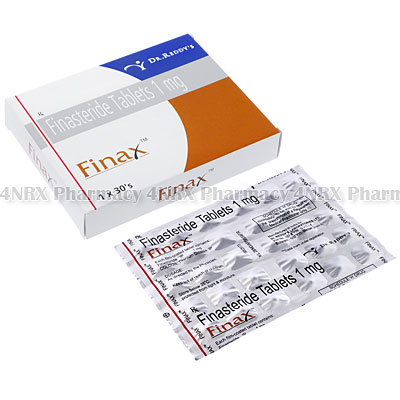 |
Home  Hair Hair  Finax (Finasteride) Finax (Finasteride) |
|
|||||||||
|
Finax (Finasteride)
What is Finax (Finasteride) used for? Finax (Finasteride) contains the active ingredient finasteride which is proven to help prevent hair loss caused by male pattern baldness. This is accomplished by inhibiting the action of a compound in the body called type II 5-alpha reductase. This compound is responsible for converting the male hormone testosterone into dihydrotestosterone (DHT). This can damage hair follicles and lead to hair loss in men who are genetically sensitive to it. How should I use Finax (Finasteride)? Finax (Finasteride) is typically prescribed to be taken orally once a day at the indicated amount. It may be taken with or without food along with a full glass of water. Never split, chew, or crush the tablets before taking them. It may take three to six months of treatment before you notice a decrease in hair loss or increase in hair density. Continued use of this medicine is recommended to obtain the maximum benefit. If you stop taking it, you are likely to lose any hair you have gained within 9 to 12 months. What are the side effects of Finax (Finasteride)? Some side effects may occur while taking Finax (Finasteride). If any symptoms become troubling, intense, or persistent, contact your doctor for advice. It may be necessary to alter your treatment or seek medical assistance.
Please Note If you have decreased liver or kidney function, consult your doctor before using Finax (Finasteride). Also report if you have any conditions affecting your urethra or urinary tract as this medication may cause a deterioration of symptoms. Strictly use this medication as prescribed and follow all instructions provided by your doctor. Safe, suitable, and optimum dosage can vary and is dependent on the patient's health and medical history, as well as the condition you are treating. Finax may not be safe or suitable for all patients. Always ensure you doctor is informed if you are pregnant or breastfeeding, using any other type of medication (including non-prescription medicine, vitamins, and supplements), as well as if you have any allergies, other illnesses, or pre-existing medication conditions. Seek immediate medical attention or proceed to your nearest accident and emergency department if you suffer a hypersensitive or allergic reaction. Symptoms usually present during a reaction of this nature include difficulty breathing or swallowing, swelling of the limbs or face, tight chest, hives, and skin rashes. 
|
|||||||||||||||||